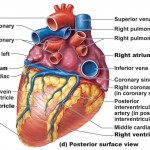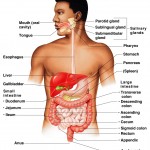 Body Systems
Body Systems
Lever Systems: Bone-Muscle Relationships

How do our bones and muscles work? What makes movement possible? These are just a few questions you may find yourself thinking about now and again, and although these questions cant be answered in a single article, we can tackle the idea of leverage and bone-muscle relationships. In this article we’ll discuss mechanical advantage, mechanical disadvantage, the idea of a lever, fulcrum, effort, and load, classes of levers, and lever systems within the human body.
Muscle Mechanics: Fascicle Arrangement

How do muscles work? Picture a hand-woven quilt full of strong fibers that have different shapes, sizes, and elasticities. The fibers may converge toward a single point, or run parallel with other muscles. Maybe they’re circular (like the muscle fibers around your mouth and eyes), and attach obliquely. In short, the arrangement of a muscle’s fiber bundles (fascicles) determines its range of motion and power. In this article we’ll discuss fiber arrangements and muscle mechanics.
Function and Classification of Bones
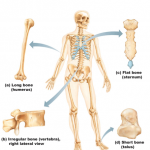
The human skeleton contains 206 known bones and because of its sheer scope, a classification system had to be invented. Typically, bones are classified into four categories by shape: long, short, flat, and irregular. The skeleton is again classified into smaller and more specific groups which we’ll discuss in future publications. The seven functions of bone: support, protection, movement, mineral storage, cell formation, fat storage, and hormone production are briefly discussed as well.
Skeletal Cartilages
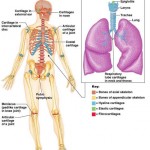
Along with its bones, the skeleton contains resilient cartilages, and although the major focus of this category is skeletal structure and bone tissue, we will briefly discuss the three main skeletal cartilages in this article. Skeletal Cartilages The human skeleton is initially made up of cartilages and fibrous membranes, but bone soon replaces most of […]
The Lymphatic System
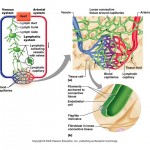
The lymphatic system returns fluids that have leaked from the blood (vascular system) back to the blood. Without it, our cardiovascular and immune systems would begin to shut down. The lymphatic system contains three parts, a network of lymphatic vessels, a fluid inside of the vessels called lymph, and lymph nodes that cleanse the lymph […]
Digestive System: Histology of the Alimentary Canal
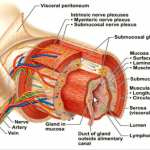
The Alimentary Canal In a recent article titled “Digestive System Overview“, we discussed the six processes of digestion. We also discussed the two main divisions of the digestive system, organs within the alimentary canal and accessory digestive organs. In this article, we’ll discuss the structural characteristics of the alimentary canal, which is also known as […]
The Cardiovascular System: Blood Vessels
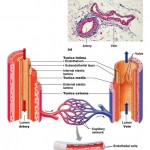
Blood Vessels are often compared to a system of pipes with liquid circulating in them, but this analogy is only a starting point. Unlike pipes, blood vessels are extremely dynamic structures that constrict, relax, pulsate, and proliferate. In this article, we’ll examine the structure and function of these important circulatory pathways. If these pathways get […]
Atherosclerosis
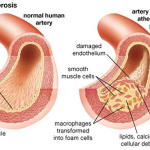
Atherosclerosis When pipes get clogged, its usually because we flushed something down the drain we shouldn’t have. Sometimes, build-up inside of pipes causes clogging. In arteriosclerosis, the walls of the arteries become thick and stiff and hypertension results. In atherosclerosis, which is the most common form of arteriosclerosis, small patchy areas called atheromas form that […]
Hemophilia & Thrombocytopenia

Anything that interferes with the clotting mechanism of blood can cause abnormal bleeding. The most common causes are platelet deficiency (thrombocytopenia) and deficits of some clotting factors, which can result from impaired liver function or genetic conditions such as hemophilia. Thrombocytopenia Thrombocytopenia is a condition in which the number of circulating platelets is deficient, which […]
Osteoporosis

Osteoporosis Osteoporosis refers to a group of diseases in which bone resorption outpaces bone deposit (i.e. bone loss occurs faster than bone growth). The bones become so fragile that something as simple as a hefty sneeze or stepping off a curb can cause them to break. The composition of the matrix remains normal, but overall […]



